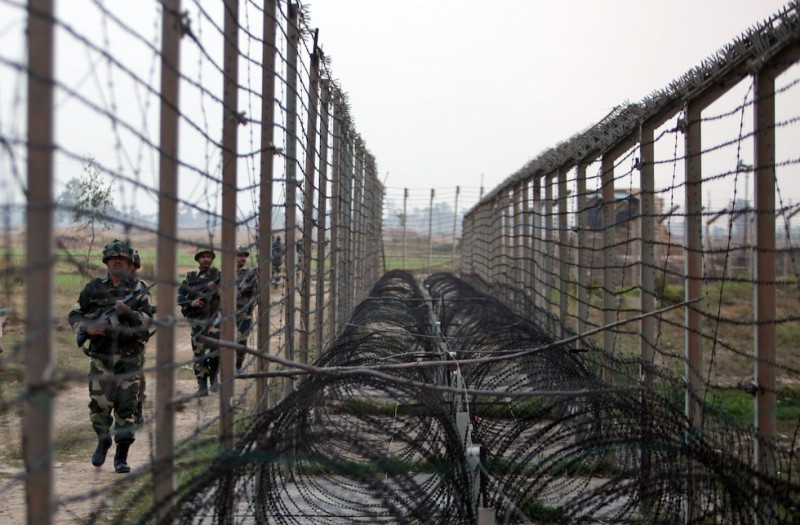This is the second article in a seven-part series examining America’s future strategic options toward China. The first looked at confrontation. This piece considers the strategy of enhanced balancing.
The assumptions and proposals of enhanced balancing
While avoiding the radical tactics of preventive war and economic strangulation advocated by confrontationists, enhanced balancers share their belief that Sino-American relations are captive to conflict-inducing structural forces as a result of China’s expanding regional ambitions and America’s inherent interest in retaining its preeminent influence in East Asia. Consequently, enhanced balancing calls for a strengthened U.S. diplomatic and military presence in the Asia-Pacific to check the People’s Republic of China (PRC).
Yet unlike confrontation, which argues that a state’s political system is irrelevant to the foreign policy it pursues, this strategy stresses that the strategic threat posed by the mainland is magnified by its authoritarian character. The United States could acquiesce to a democratic China assuming the dominant role in East Asia, according to this school of thought, as it would be less prone to aggression and viewed less menacingly by its neighbours. Yet with prospects for such a democratic transition in China decidedly low for the foreseeable future, leading enhanced balancers like political scientist Aaron Friedberg believe that the adversarial components of the Sino-American relationship are quickly overtaking incentives for cooperation. By pursuing engagement out of the naïve belief that this will moderate Chinese behaviour, they charge, Washington has been asleep at the wheel and is losing ground to a savvier Beijing in the struggle for leadership of East Asia that is already under way.
Enhanced balancing bases its policy prescriptions on the assumption that China’s intentions are hostile. While agreeing with most China watchers that the PRC has largely sought to lower tensions with both its neighbours and America to foster a stable regional climate conducive to economic growth, Friedberg and others also see a sleight-of-hand strategy at work that ultimately aims to supplant the U.S. as the Asia-Pacific’s hegemon. Beijing realizes this cannot be achieved by conventional means of conquest. It focuses instead on “winning without fighting”: muting America’s response to its growing power, sowing doubts about U.S. reliability among its regional allies, and developing “anti-access/area denial” technology that will restrict the ability of U.S. forces to operate near China’s coasts by placing its Asian bases within range of Chinese missiles.
As a result of these trends, Friedberg warns darkly, the military balance in the Western Pacific is subtly tilting in favour of Beijing, which will eventually leave its neighbours no other choice but to accommodate its wishes and gravitate away from Washington’s orbit. Such an outcome would contradict America’s historic interest in blocking an adversarial power from gaining dominance at either end of the Eurasian continent.
To check this threatening drift, enhanced balancers argue for dispensing with the apparent myth that U.S. restraint will induce a reciprocal Chinese response, demonstrating America’s staying power to its Asian friends, and countering the PRC’s military build-up. While such an approach does not preclude cooperation on issues of mutual concern, it requires a much stronger emphasis on the containment ledger of Washington’s traditional two-pronged approach toward the mainland.
Less attention, for example, should be focused on catering to Chinese sensitivities over foreign interference in their domestic politics and efforts to promote freedom in China should be accelerated by facilitating the flow of information in and out of the country. More substantively, enhanced balancing calls for a heightened U.S. military presence in East Asia to blunt and sidestep the PRC’s evolving anti-access/area denial technology. Preserving America’s military superiority in the region serves the dual purpose of reassuring nervous allies and deterring the increasing likelihood of Chinese adventurism.
A second strain of enhanced balancing sees the imperative of a strengthened military posture in Asia as part of a larger project of preserving the post-war liberal economic and security order. Concerned with more than just the traditional concept of strategic competition that preoccupies realists like Friedberg, neoconservative thinkers like Robert Kagan and Robert Lieber regard a more robust containment of China as key to reasserting America’s global leadership. Without robust American engagement abroad, they contend that the U.S.-led global order responsible for unprecedented peace and prosperity will gradually wither away, as authoritarian states like China and Russia, with no stake in sustaining a set of rules and institutions they had no hand in creating, step to the fore. A shift away from an American-dominated world to a multipolar order would likely yield chaos and conflict, as China, among others, moves to carve out its own politico-economic sphere of influence. Rather than accommodate a revisionist China, the United States needs to vigorously contain it by working for political change in Beijing, increasing its military capabilities in the region, and shoring up alliances.




